
Wir reisen, also sind wir
vakantio.de/wirreisenalsosindwir
Argentina: Cordoba (Capilla del Monte, Alta Gracia, Jesus Maria)
Atejade: 02.04.2019
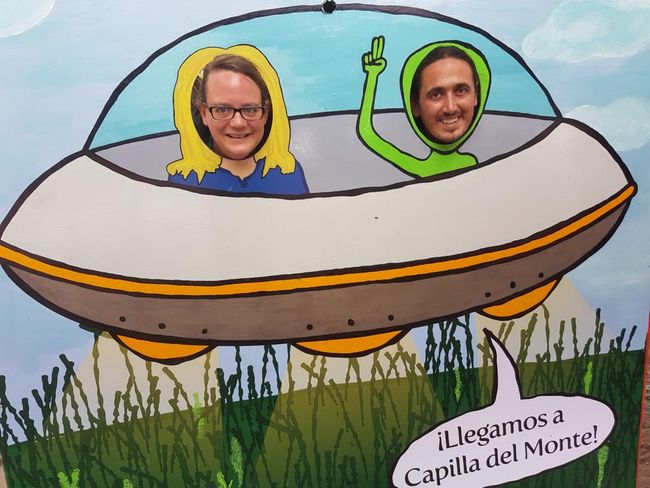
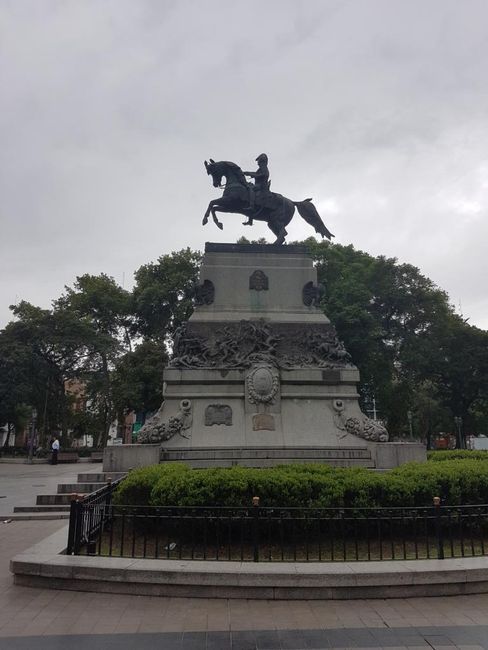
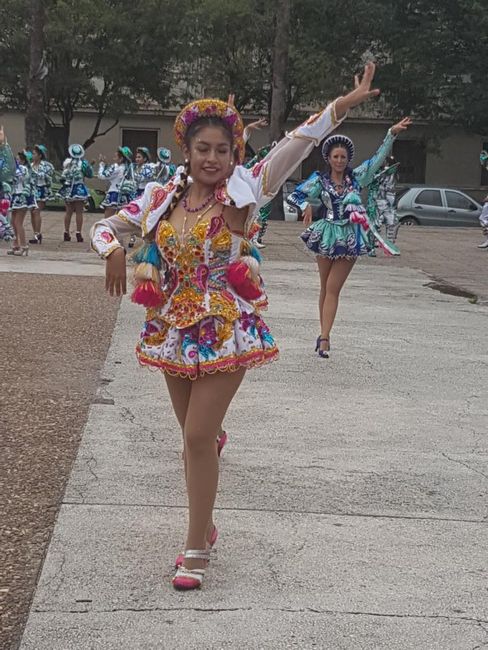
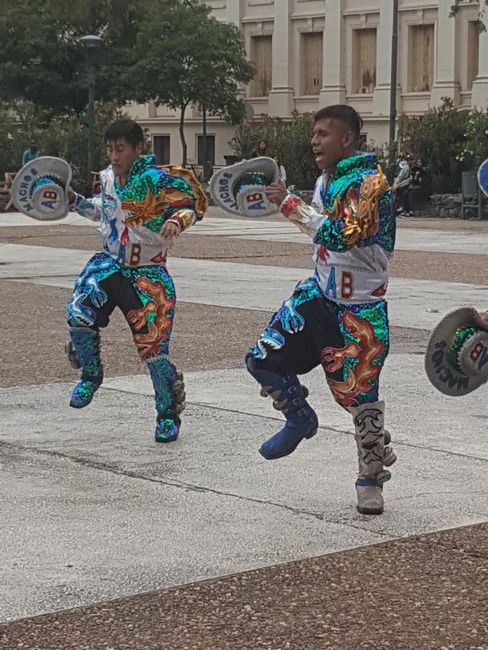
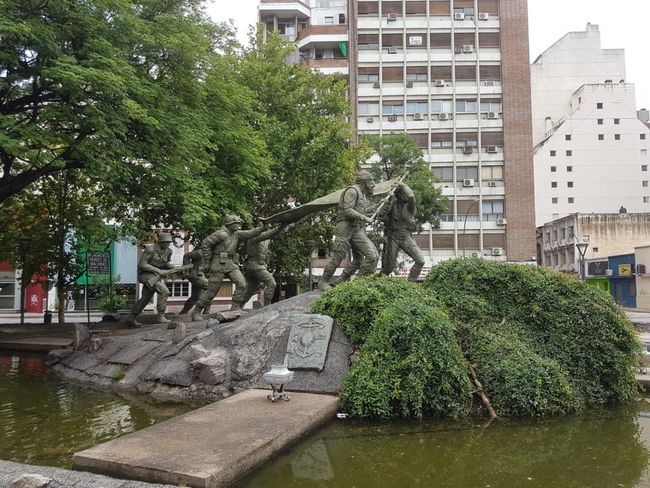
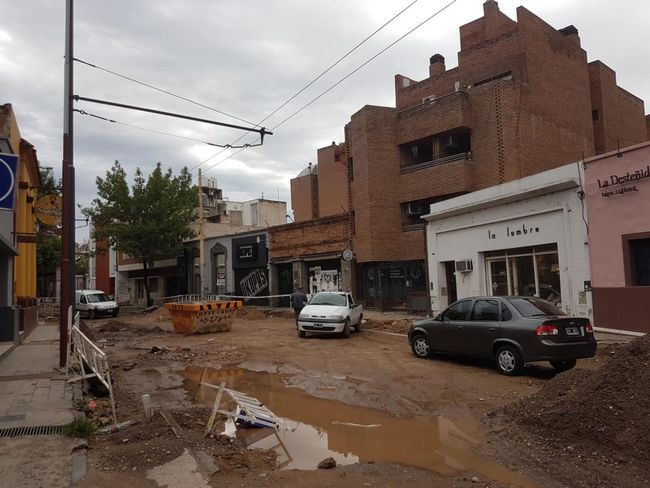
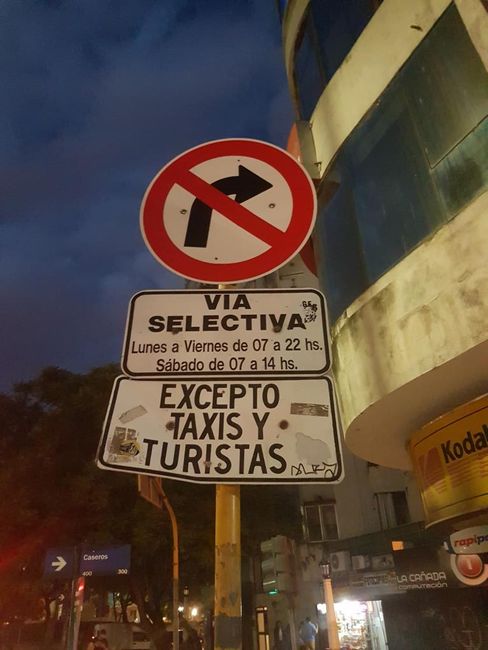
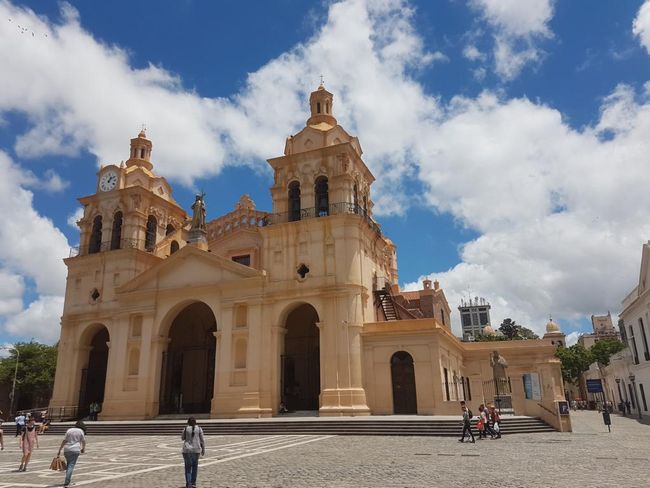
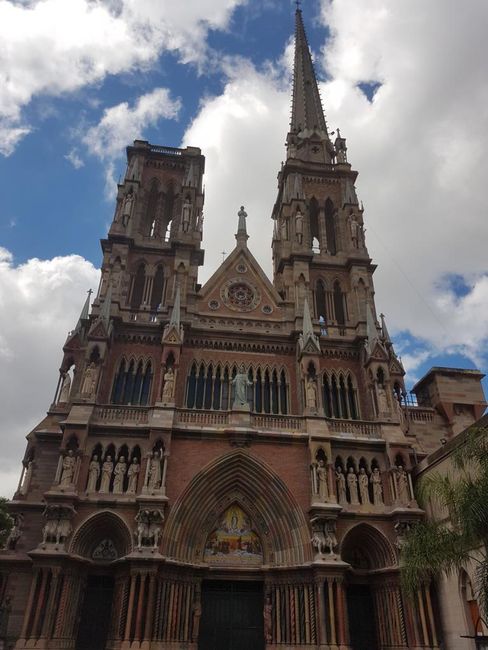
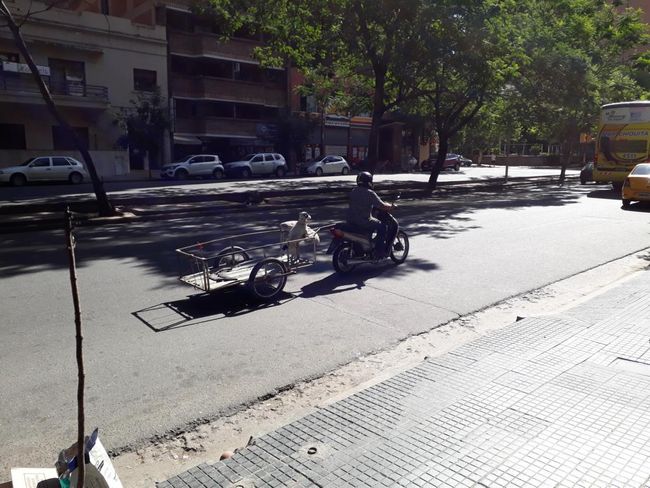
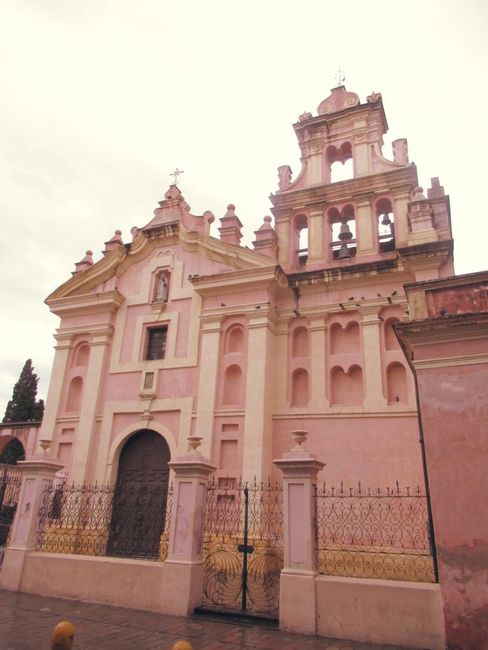
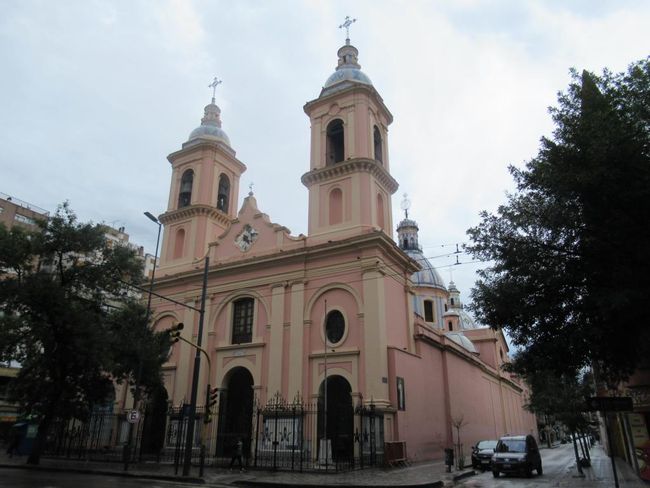
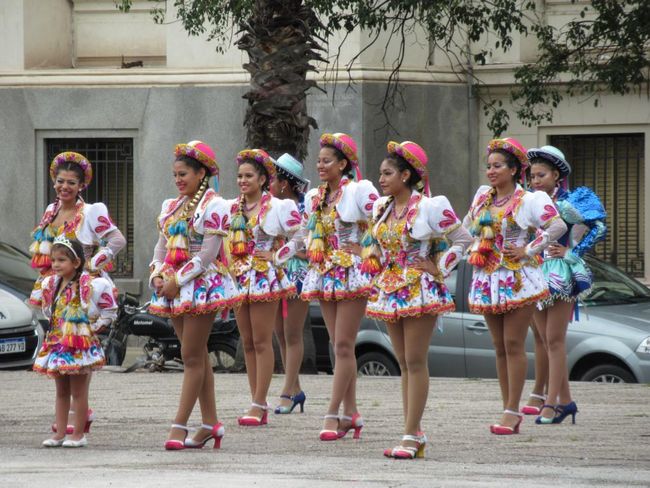
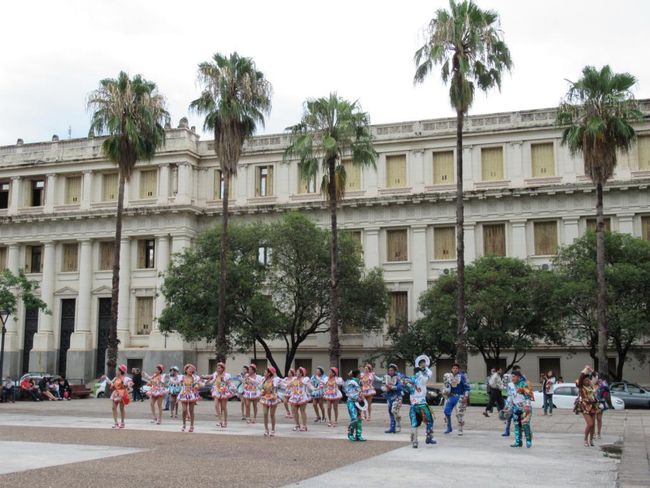
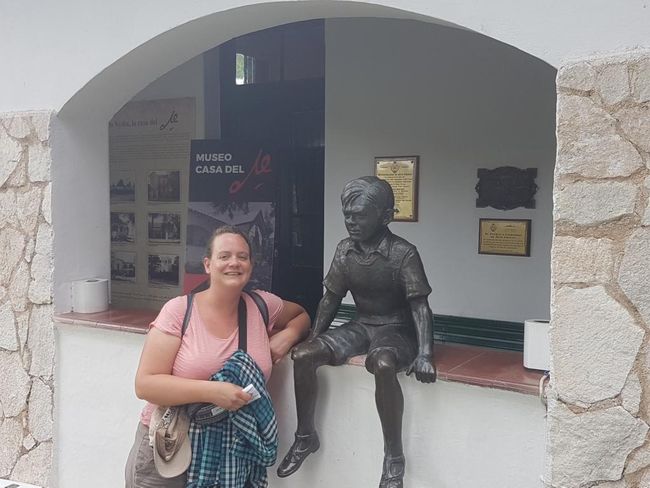
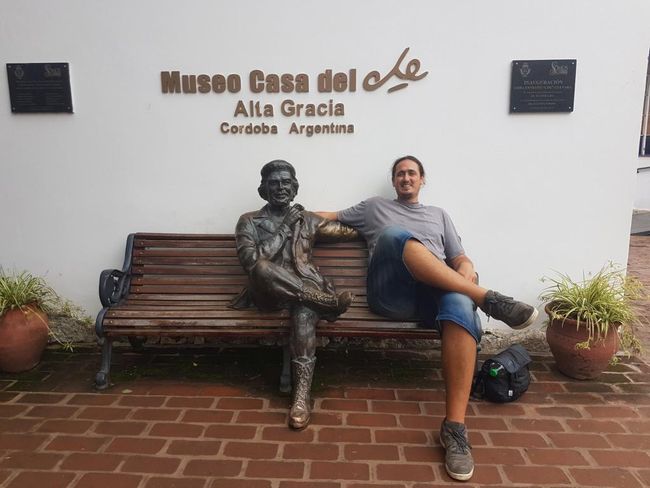
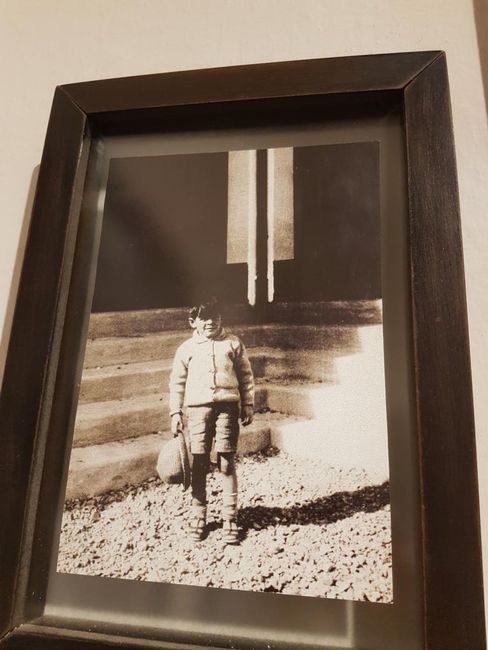
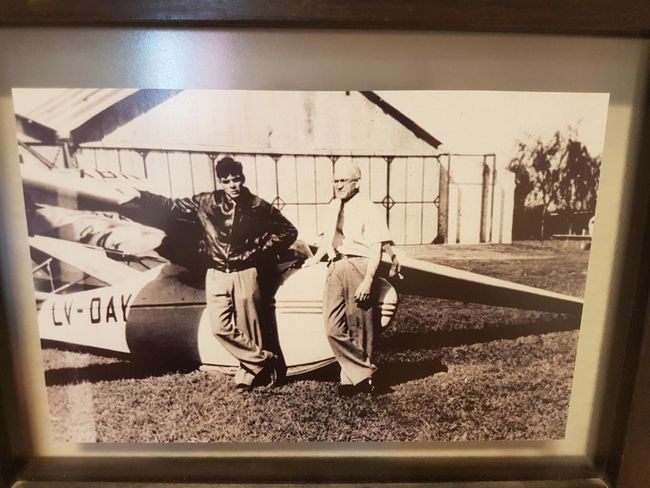
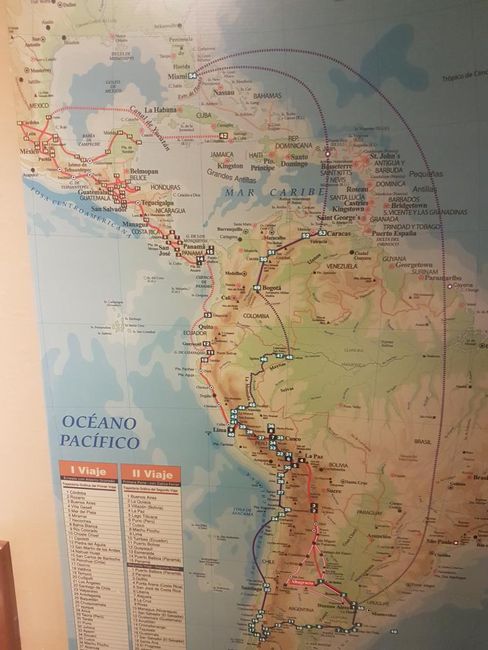
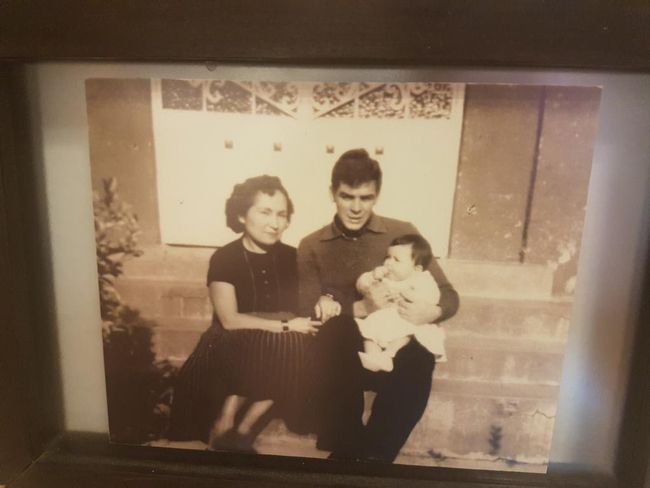
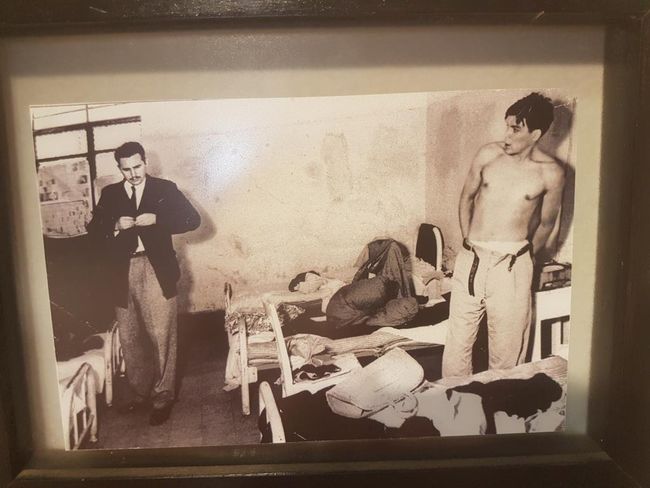
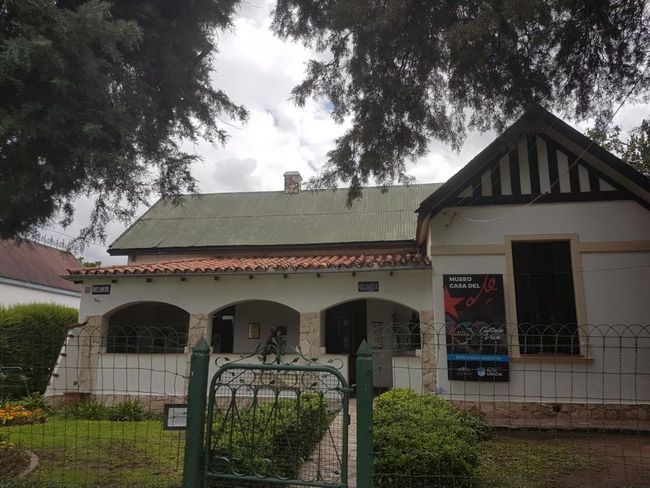
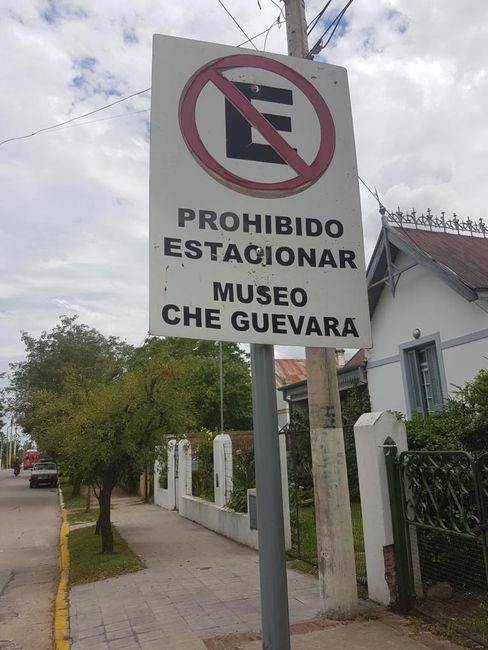
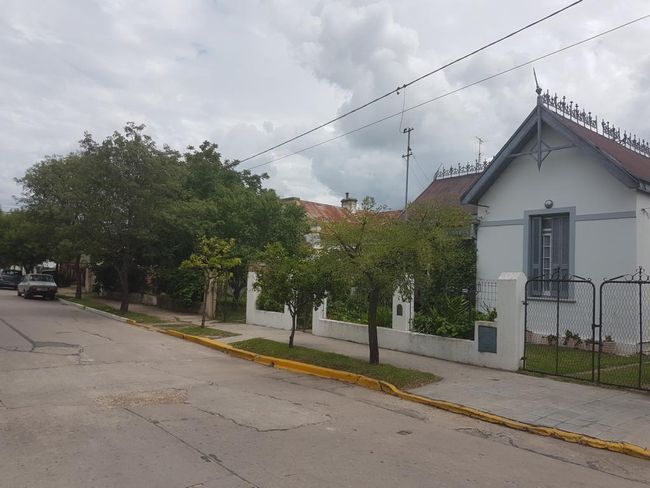
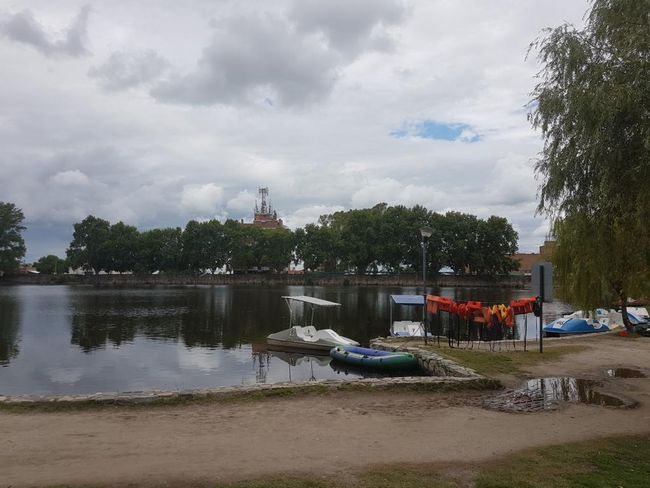
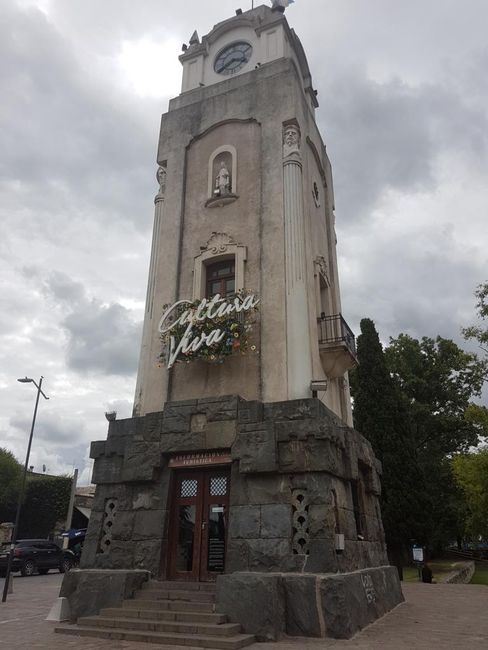
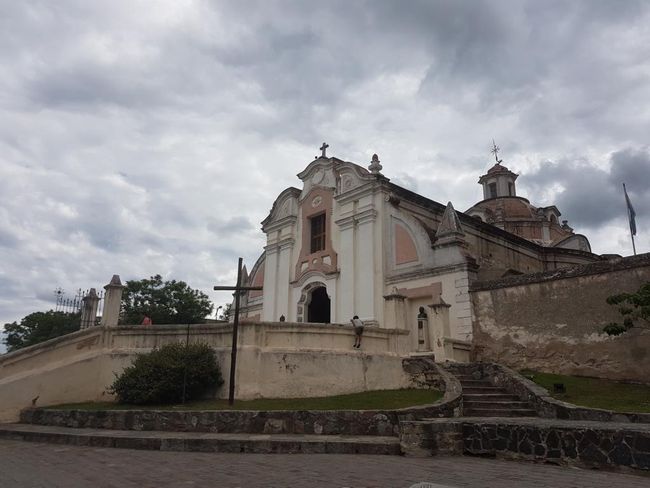
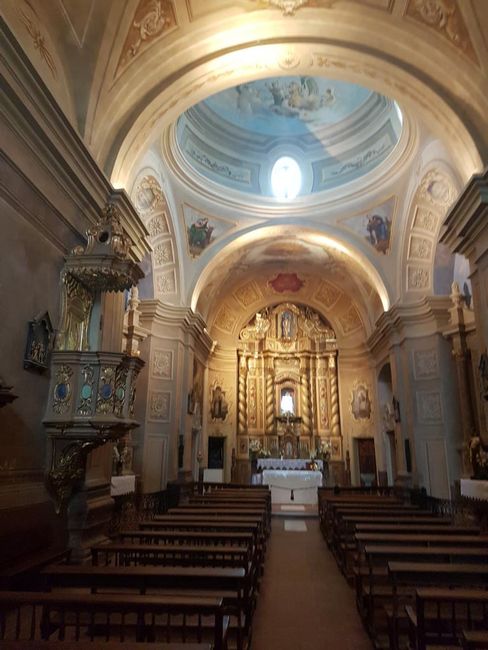
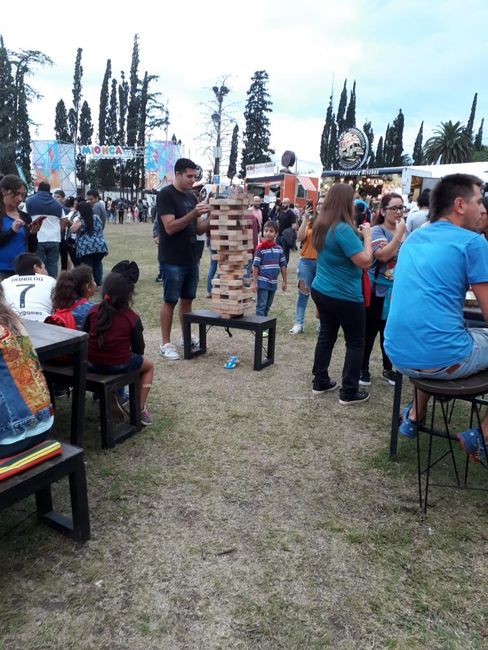
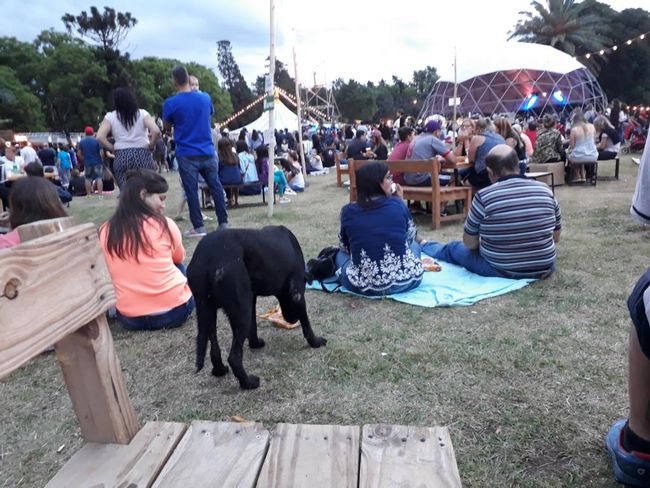
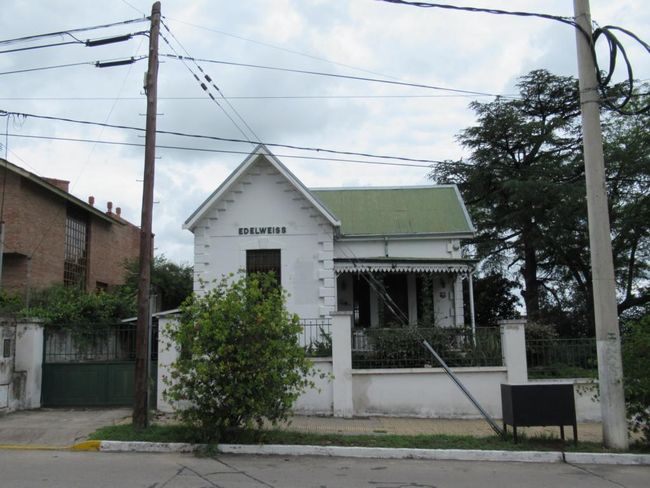
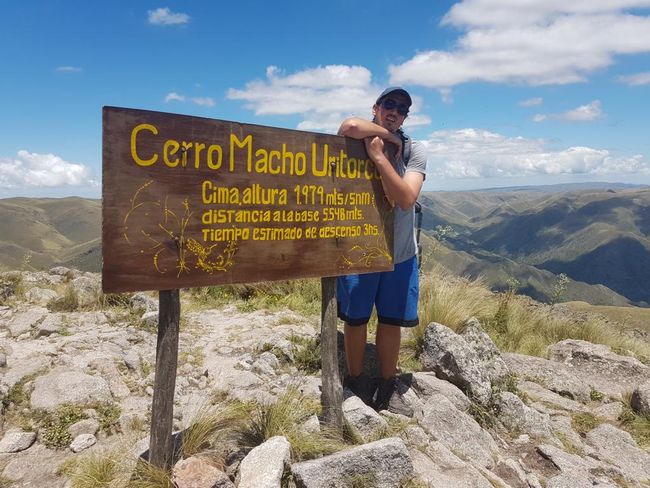
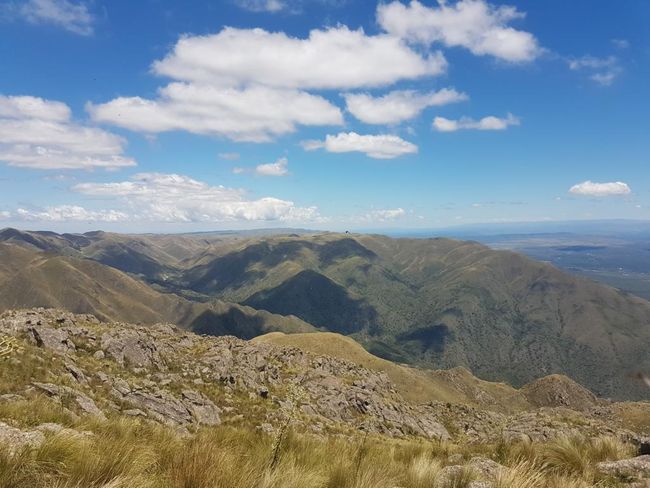
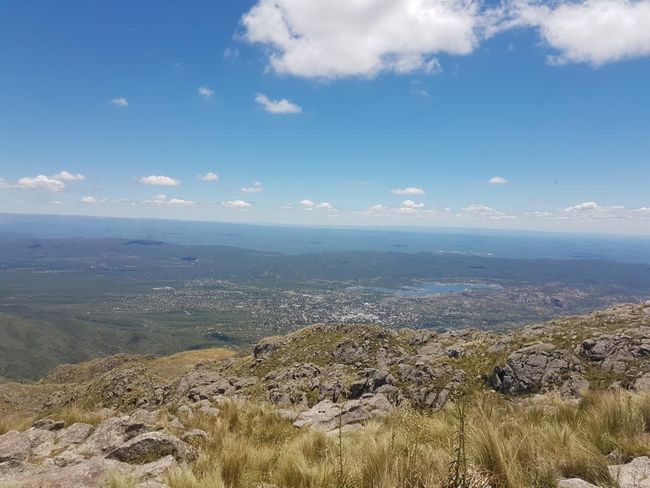
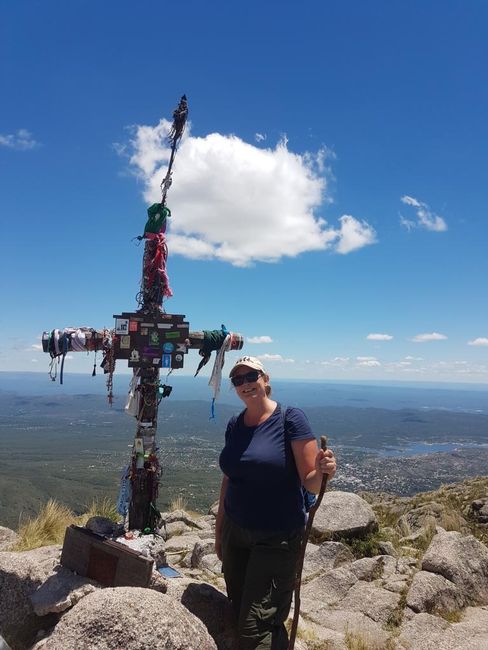
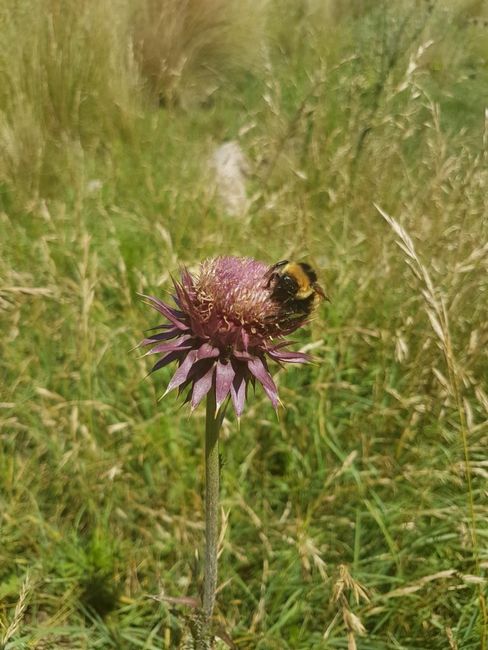
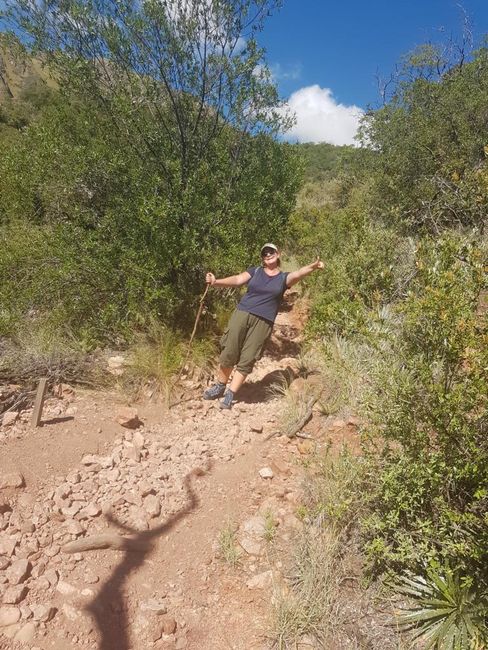
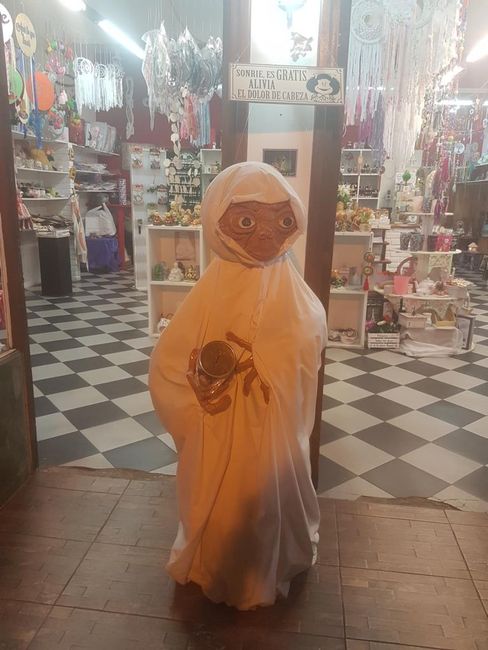
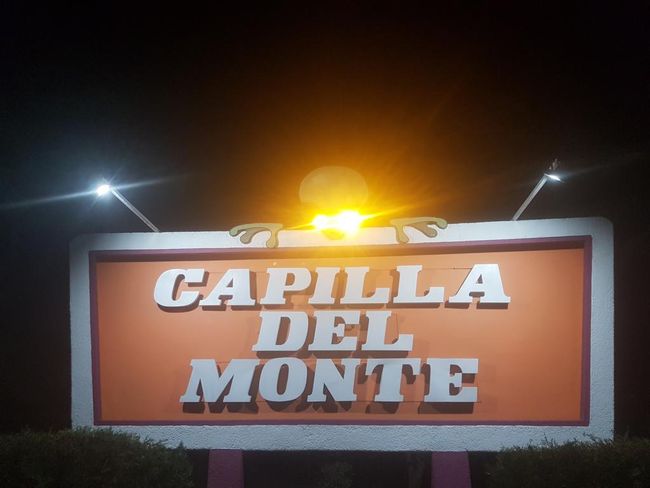
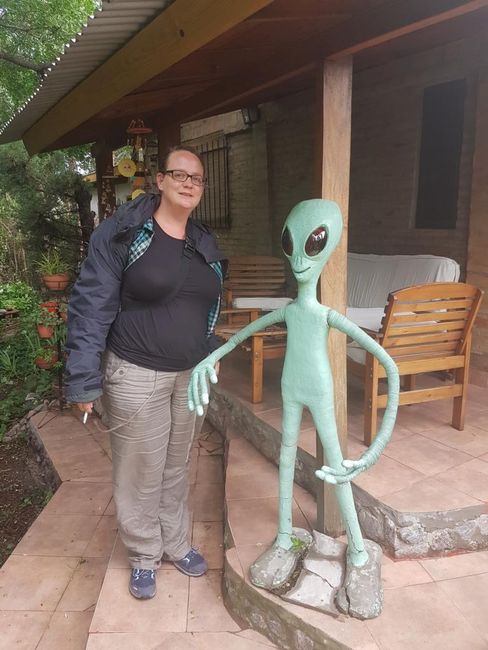
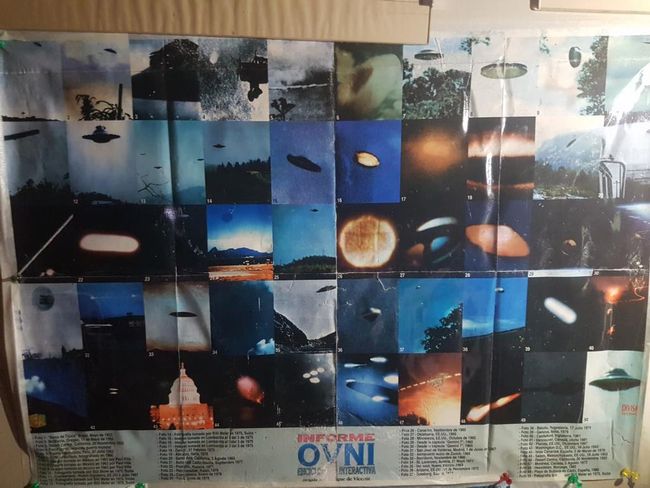
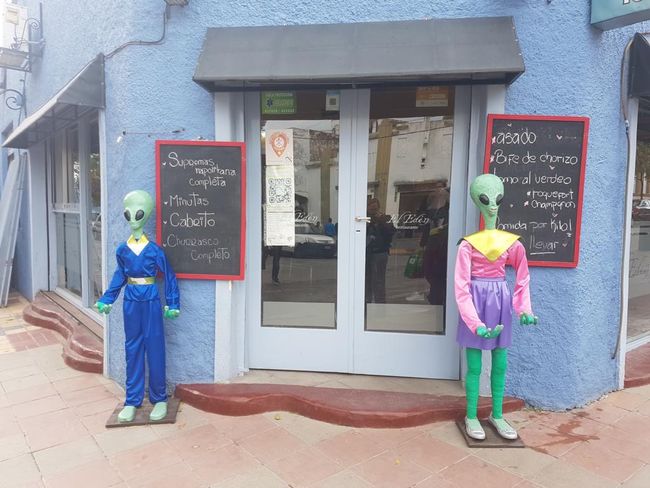
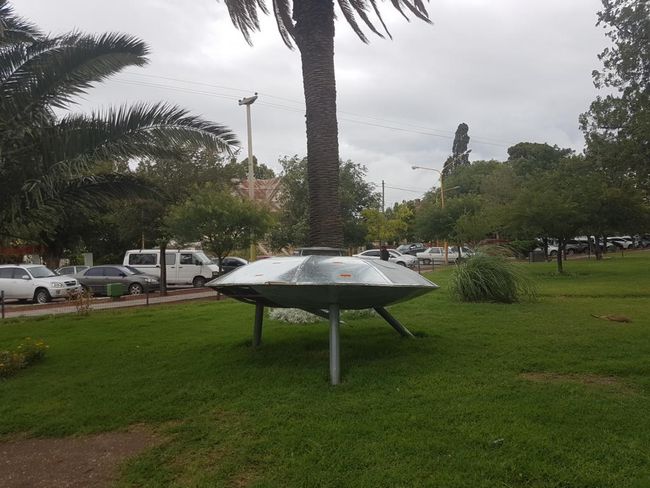
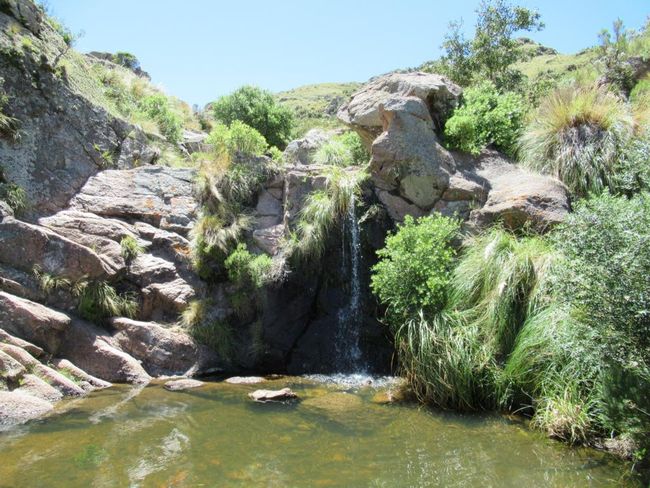
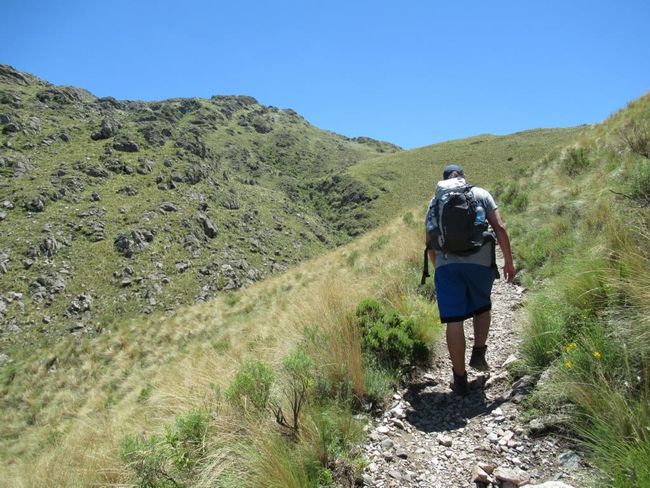
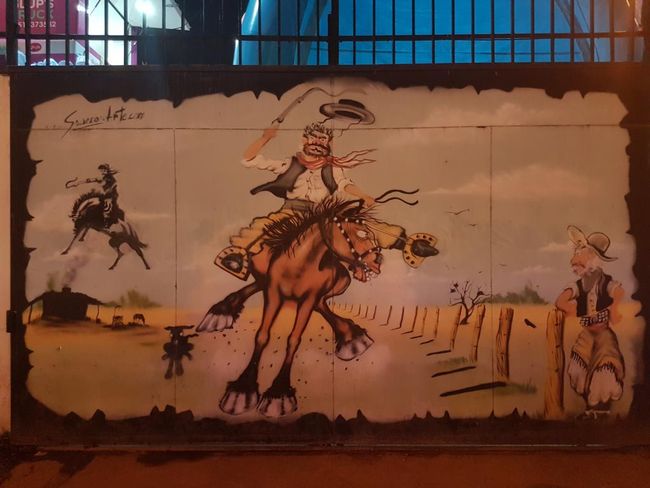
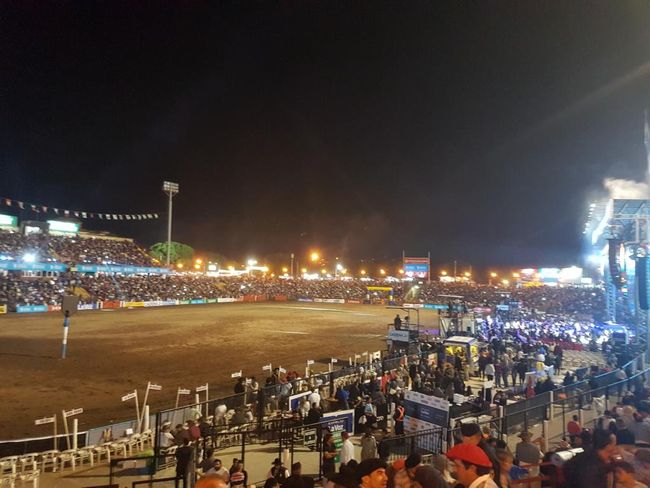
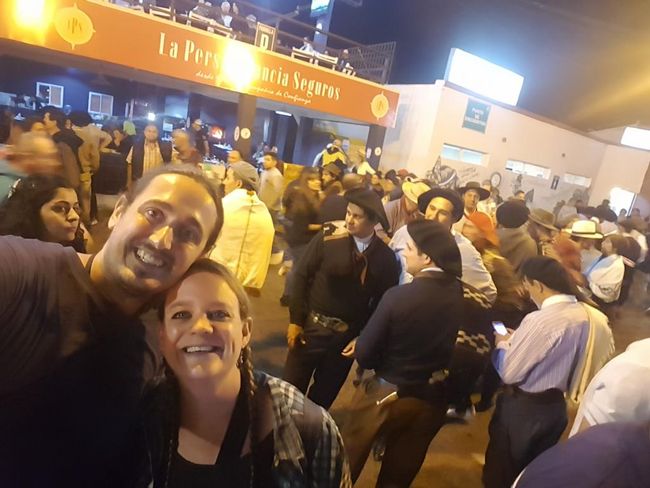
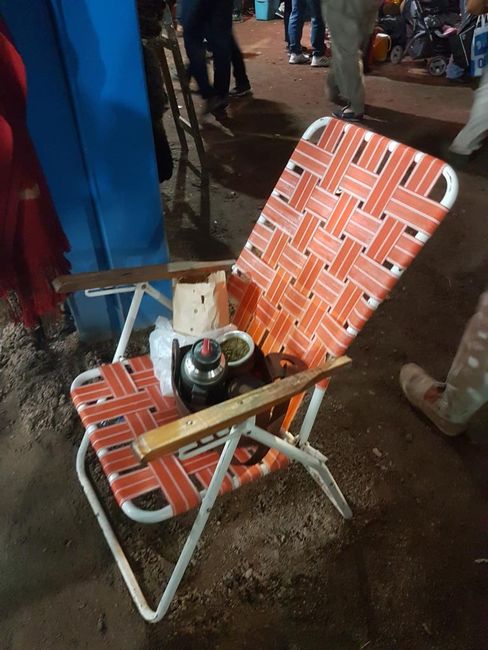
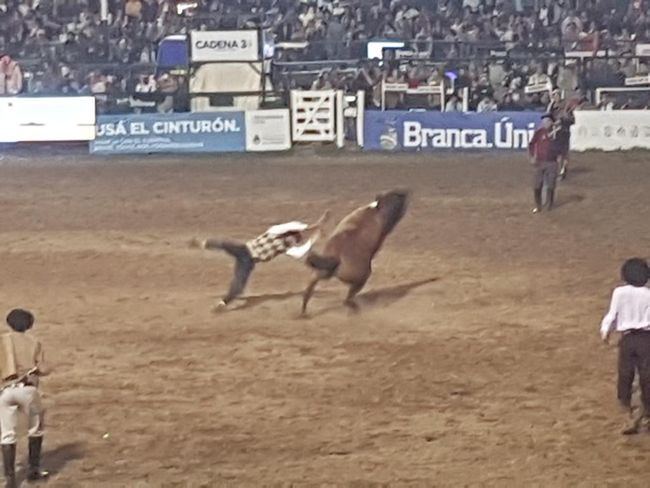
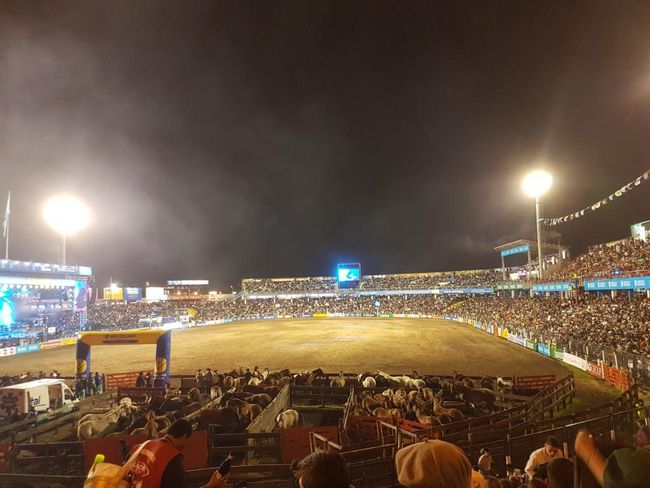
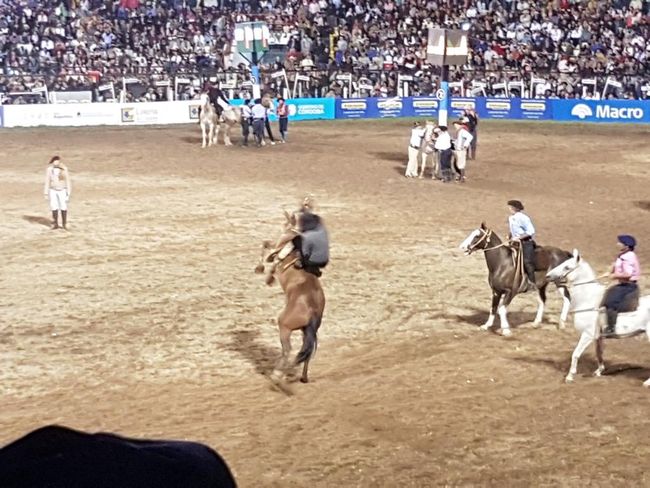
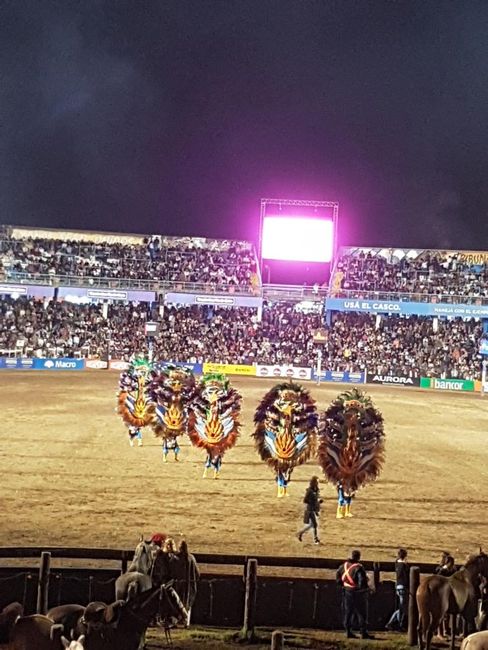
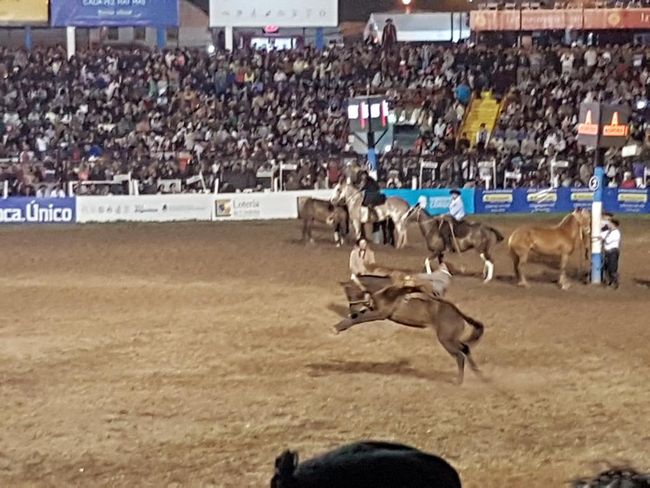
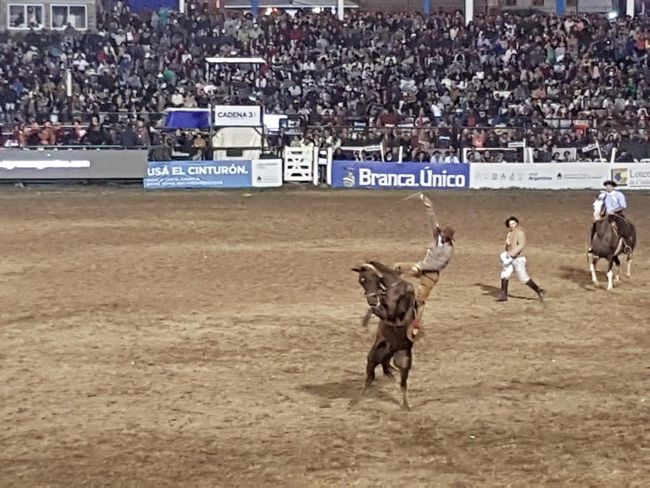
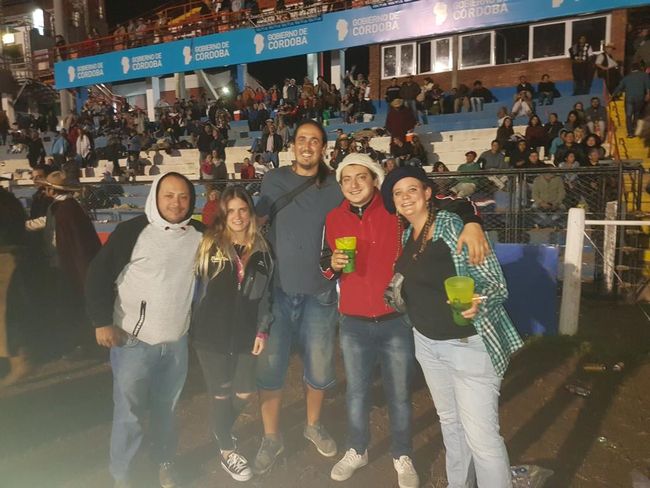
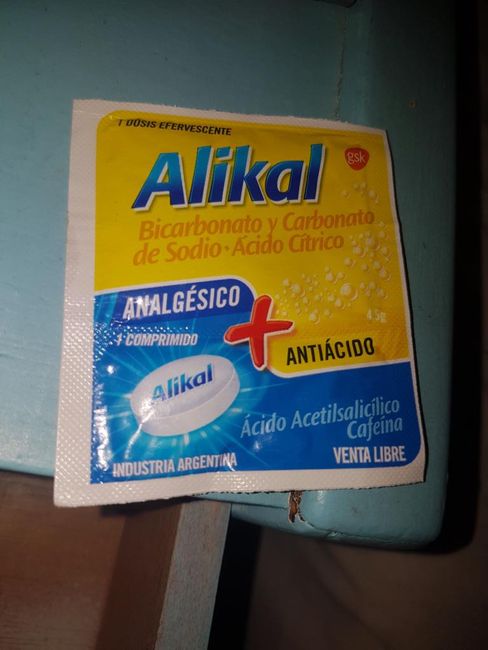
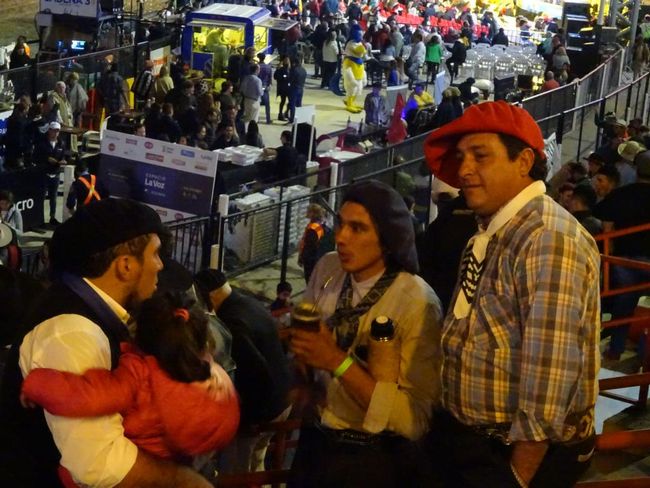
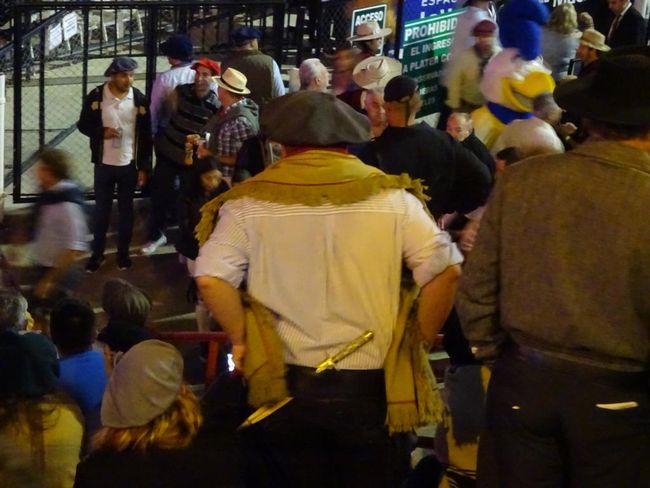
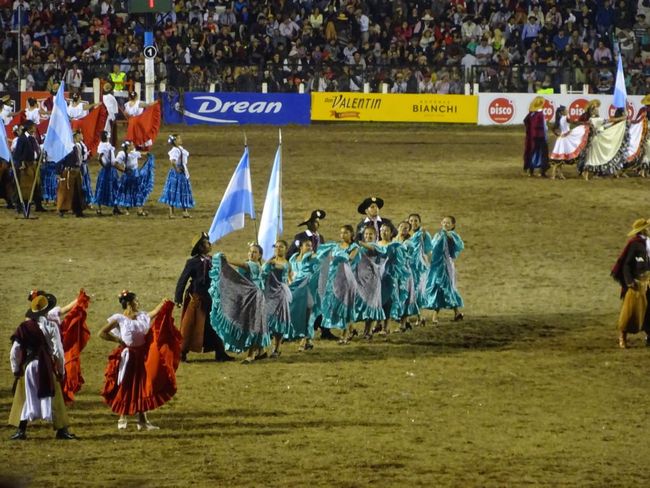
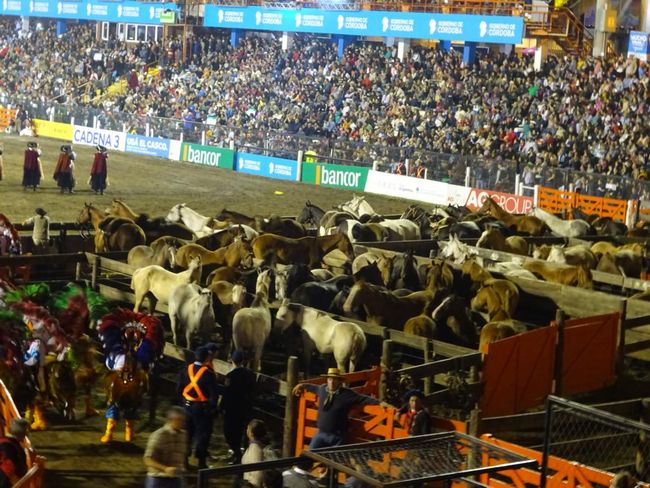
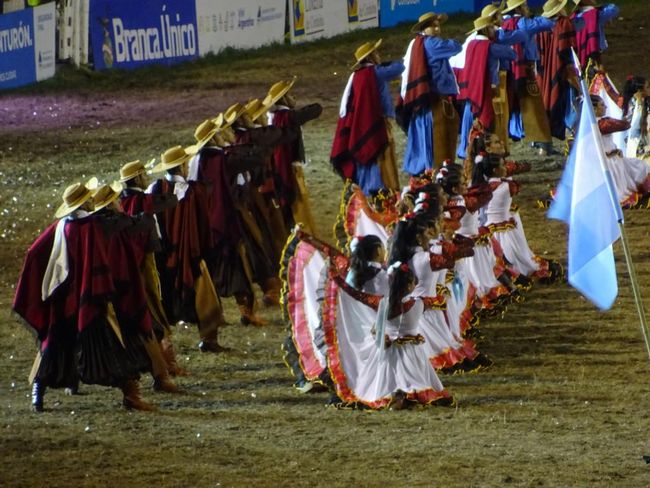
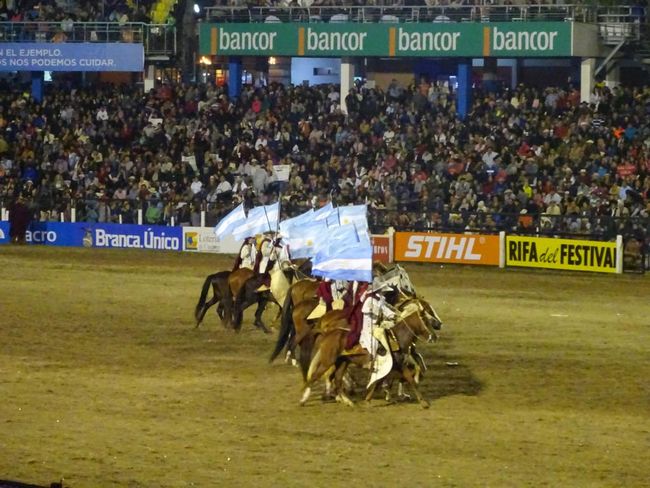
Alabapin si iwe iroyin
The bus trip from Rosario to Cordoba is "only" 6 hours, we were told. These people probably didn't realize that you can cross the whole of Switzerland twice in 6 hours. But eventually, you get used to these incredibly long distances.
From Cordoba, we first went to Alta Gracia, a small town about 1 hour drive outside of Cordoba. This is where the wealthier people of the area live, and you can admire some beautiful villas in the town.
The main attraction for us was the completion of our Che Guevara project. This is where the revolutionary spent his youth, and the former family home is now a museum. The museum contains a photographic retrospective of Che's life, a map showing his travels through South America, letters from him, copies of his diaries, articles he wrote for magazines about his travels, as well as some furniture and other memorabilia. You can also pose for photos with a statue of the young Che. The visit didn't bring any new insights, but the museum is very lovingly designed and above all very objective. It is not about evaluating his political views (neither positive nor negative), there is no propaganda or glorification. It simply tells the story of the family of a well-known figure who spent part of their life here. The films with interviews of old childhood friends of the Comandante are interesting. They tell that there were always many children coming to play at the Guevara's home. All friends were welcome and even allowed to stay for dinner. His former nanny also talked and lovingly told us about her time in the family. She started working for the Guevaras when Ernestito was just 4 years old. When he had severe asthma attacks, she carried him in her arms to bed because he couldn't walk anymore. She told how years later she passed by the Colegio in Cordoba and coincidentally met Che as a teenager, who immediately recognized her and warmly embraced her. No matter what he did in life, no matter what people think of him, for her he would always be the little Ernestito. That was really touching.
One room of the museum also shows many photos of the visit of Fidel Castro and Hugo Chavez.
After visiting the museum, we explored the town and passed by the Jesuit Estancia. Unfortunately, only the church can be visited, the rest of the building was closed on that day and the associated museum was also closed. You can see the Tajamar, one of the dams that were built in the 17th century. Together, the dams formed a comprehensive irrigation system for the fields that the Jesuits had planned and built. But to be honest, it's not really spectacular, it's just a small lake where you can even rent a paddle boat.
During our walk through the town, we happened to pass by a large park where preparations for a festival were apparently taking place. We inquired at the tourist office and found out that it was a kind of "food festival". So we decided to stay a little longer in Alta Gracia and visit the festival. It was really nice, clearly a festival for the locals, as we were the only foreigners there. The locals came with their children, blankets, sipped mate tea, and made sure to keep an eye on their running children. We ate at various food stalls, drank a few Patagonia beers, and listened to the local live bands, although they weren't particularly catchy. One of the bands played a kind of heavy metal, but the singer was absolutely untalented and when she screamed, it was really painful for the ears. After the gig, she said goodbye with the words: Muchas Gracias, Alta Gracia. At that moment, Jörg looked at me with a puzzled face and asked if Alta Gracia meant something like "high thanks". I couldn't stop laughing when I explained to him that we were actually in the city of Alta Gracia. Sometimes, he mixes up all the place names, my Jörg, and the planning is my responsibility. Anyway, we had an entertaining evening before we made our way back to Cordoba.
We took a two-day trip to Capilla del Monte, which is about 3 hours away from Cordoba. Capilla del Monte is known for UFO sightings, and people tell stories about strange lights that appeared in the sky above the nearby Cerro Uritorco. Although we are not necessarily UFO enthusiasts, we thought it would be something different to go there. Capilla del Monte is not only a pilgrimage site for believers in extraterrestrial life but also a vacation destination for locals, and there was a summertime atmosphere here. In the evenings, there were juggling shows and music in the streets, and many people were out and about. But actually, everything here is UFO-themed. In the park, there is a model of a flying saucer, at the entrance to the town, you are welcomed by a huge alien, and the souvenir shops sell alien merchandise.
We decided to climb the Cerro Uritorco, which turned out to be more challenging than we originally thought. The ascent took about 4 hours, and the descent took 3 hours. The hiking trail was divided into 6 sections, and point 5 was about halfway. At the entrance, we received a wristband with the starting time noted. We were told that there would be a checkpoint at point 5 to check the condition of the hikers and their water supply, and if you didn't reach point 5 within 2 hours, you were not allowed to continue. Of course, we were stressed out because of this, I had imagined the whole thing quite differently, I thought we could hike comfortably. But no, we rushed from point to point. At each intermediate station, there was a sign with the distance covered, the distance ahead, and the time to the next point. Unfortunately, the given times didn't add up so that you could reach it within 2 hours. What nonsense. And as expected, all the stress was in vain because there was no one at point 5 to check anything. We should have known. Typical Latin America. Surprisingly, the descent was unexpectedly difficult, especially because the sun had heated up the vegetation-free rocks so much that they were almost glowing. It felt like we were cooking while laboriously walking down the steep paths. It seemed to take forever until we finally reached the foot of the mountain.
Unfortunately, we didn't see any UFOs on the way, only Argentinians, lots of them. The view from the top wasn't particularly spectacular either, although the Latinos exclaimed, in their usual enthusiasm, how absolutely hermoso it was. Everything here is always equally hermoso. Anyway, we considered the whole thing as pure fitness training.
The next day, it stormed. Before our bus left, we wanted to stop by the "Centro de Informes OVNI" to learn about UFO sightings. As it turned out, the "Centro de Informes OVNI" was actually the living room of a couple who apparently have a passion for this topic and collect dubious information from around the world. There should have been a film as part of the "exhibition," but unfortunately, there was a power outage due to the storm, so we missed it and could only look at the information boards. They contained information about crop circles, the Area 51 in the USA, the discovery of alleged giant skeletons in Ecuador, reports from Roswell, also known for UFO sightings, and a mirror made of mysterious material in Africa. One display board with pictures of sighted UFOs from around the world was particularly funny. Surprisingly often, photos from Switzerland from allegedly different years were included, although the pictures all came from the same person and the flying saucers looked remarkably similar. In fact, there is a story in Capilla del Monte about the Gomez family who claimed to have seen bright lights and a UFO in 1986. Subsequently, a huge burn mark was found on a hillside. Measurements revealed that it was 125x70m in size. How it was created remained unknown. Officially, meteorological phenomena and particularly energetic rock inside the Cerro Uritorco are mentioned. The director of the "information center" also told us about several of his own UFO sightings, and he even showed us some videos on his phone, although not much was recognizable on them.
Of course, it is easy to dismiss the lady as a freak, she did seem a bit freaky. On the other hand, it is nice when someone dedicates their life with such passion to something they believe in. After all, it is through this dedication that great discoveries are made. And who knows, none of us can exclude the possibility that there is something to it. It would be quite a coincidence if we were the only living beings in this infinite and unfathomable universe.....
From Cordoba, we took another trip that turned out to be one of the highlights of the whole journey. In the town of Jesus Maria, about 1 hour from Cordoba, the Festival de Doma y Folklore takes place every year. Actually, we had been hesitating to go there because it meant staying one day longer in Cordoba, which we were not particularly excited about. But it turned out to be more than worth it, thank goodness we stayed to have this fantastic experience.
First, we had to get tickets. So we found the local "Ticketcorner" in Cordoba. However, it turned into a test of patience as shift change was happening just at that moment when we arrived at the counter. One might think, no problem, just wait a moment. But not in Latin America, this moment can easily last 30 minutes while you stand in front of the damn counter being completely ignored by the employees, as a longer line is slowly forming behind you. When the employees finally felt the need to call "Adelante", the patience was already wearing thin, and it definitely ran out when the dear staff couldn't answer any questions about the festival. At least they could somewhat convincingly tell us when it starts, but they had no clue about the program, how to get there and back, or if there is any additional program or fair outside the stadium before the event. They also had no idea how to get to the numbered seats in the grandstand, they could only sell us the "Entrada General" (the general admission). Well, we took that for now. Fortunately, we found out at the bus terminal that buses run every hour throughout the night between Cordoba and Jesus Maria, so at least we could save ourselves the difficult last-minute search for accommodation.
On the designated day, we drove to Jesus Maria. There was actually a fair in front of the stadium. There were various food and drink stands where we grabbed something to eat, as well as a small market where we could stroll around. We inquired at the box office about the specifically marked grandstand seats and met a very friendly and helpful young employee who advised us against buying those seats. It's much nicer to mix with the "common people" with the "Entrada General". Luckily, because she was absolutely right. When we entered the stadium, it was already full, so unfortunately we couldn't find a seat. Unlike in other places, at Argentine events you can bring your own drinks, so you don't have to buy expensive drinks inside the stadium. Alcohol is also not a problem, you just have to transfer it into plastic bottles, glass bottles are not allowed. Which is a bit absurd considering that many people were dressed in traditional Gaucho attire, which includes a huge knife. But well, that's how it is here. You can also bring coolers, but you have to pay half the price of the "Entrada General" for them. But that's okay because the entrance fee is really cheap. The Argentinians came equipped with everything, they had brought their entire household as if they were planning to settle in the stadium. Blankets were spread out to reserve seats, food and drinks were spread out, toys for the children were also there, and of course the usual mate tea utensils. So the festival could begin. Argentinians celebrate late, such events only start late in the evening and last until the early morning. Children are just there and if they fall asleep, they fall asleep.
The festival lasts for 10 days, and every evening, it's a lively event. There is a Doma competition (rodeo, horse taming) during the festival. Men compete in different categories, and on the final evening, the winners are announced in the final round. The aim is to stay on a wild horse for as long as possible. First, the horses are tied to a post and kept calm. Then the rider mounts the horse, and the horse is released. From that point on, the clock starts ticking backwards. In the lighter category, the horse carries a small saddle where the rider can sit and hold on. Then he has to stay on the horse for 12 seconds to move on to the next round. If the rider doesn't have any aids, i.e., no saddle, and sits directly on the bare back of the animal, the time limit is 8 seconds. If he exceeds this time, a horn sounds, the clock stops, and the rider is picked up from the wild horse by 2 Ayudantes (assistants) on horses, while other Ayudantes collect the horse that ran away. If the rider is thrown off the running horse before the time is up... well... he has to protect his privates with his hands, tuck his head and hope that the horse doesn't trample on him. In that case, he is of course out of the tournament. By the way, women do not participate in the rodeo, but there are women who ride as Ayudantes.
Animal welfare organizations regularly accuse the organizers of animal cruelty. It is certainly not very pleasant for the horses to be held in this cramped and, above all, loud stadium all evening, and the practices of breaking in the horses that are demonstrated here are also not particularly animal-friendly. The day before, I had even read on the internet that during the festival a few days earlier, a horse was so severely injured in the rodeo that it had to be put down. On the other hand, these customs have been part of the culture of these people for ages, the festival has a long tradition, and it is difficult to dissuade them from it. People travel from all over the country, spending a lot of money on travel and accommodation just to be here, it is the highlight of the year for many. In fact, people reacted almost enviously when we later told them that we had been to the Festival de Doma y Folklore in Jesus Maria. And we were really the only foreigners in the entire stadium. This is definitely an event for locals and not a tourist spectacle. There are tourist estancias all over the country where you can spend the night for a lot of money and watch Gaucho horse shows, but this is definitely something else. This was authentic Gaucho culture, which is why it was such a great experience for us.
Although I bought a typical Gaucho cap there to blend in better with the crowd, we still stood out like sore thumbs. Nevertheless, we felt very welcome, everyone willingly answered our questions and gladly explained the rules of the rodeo when we asked about them.
Between the horse riding competitions, there were concerts of local artists on the stage, but of course, we didn't know any of them. Every evening, there was a special show that symbolized the theme of the evening. On our evening, it was a folklore group from Salta who performed local dances on the huge field. There were also many food stalls and market stalls where you could buy all kinds of Gaucho-related products (bridle, saddles, decorative belt buckles, etc.), and an automatic rodeo facility for children where they could gain their first experience on a plastic horse.
During the evening, we made friends with a group of young people. When the last rodeo round of the day was over, the gates to the field were opened, and everyone rushed down to listen to another concert up close. Our new friends (we don't even know their names) invited us to come down with them. We had a great time together, dancing and sharing rum and Fernet-Coca (the favorite cocktail of the Argentinians: Fernet Branca with Coca-Cola). When Jörg went to get another Fernet-Coca, a boy approached me and asked if I wanted to dance with him. Of course, I did, and while we were dancing, he asked me if I was alone. When I answered that I was with my boyfriend, he immediately asked if my boyfriend was dangerous. I laughed and waved it off. When Jörg appeared with the Fernet-Coca in his hand, the boy seemed to get a bit scared, seeing as Jörg was almost twice his size. He appeared quite nervous, and of course, I wanted to reassure him. Unfortunately, excessive consumption of Fernet-Branca plays a central role in terms of foreign language proficiency. Actually, I wanted to say that my Jörg is as tame as a sheep. In reality, I probably said that Jörg is a sheep. When I finished laughing at my own stupidity and gave Jörg a kiss of apology, the boy had disappeared into the crowd.
Soon it was time for us to make our way back, as it was already almost 5 o'clock in the morning! So we said goodbye to the others and stumbled slowly towards the bus station. It was definitely too much Fernet-Coca. And we still had a cup full in our hand. When the bus driver announced that you couldn't bring drinks on the bus, we looked at each other helplessly, and the person in front of us in the queue took our Fernet cup, put it in his empty mate jug, and smuggled it for us into the bus. Very friendly indeed, thank you, even though we probably didn't need that last cup anymore. When we arrived back in Cordoba, it was already well past 6 o'clock in the morning, it was daytime, the sun was shining. The discussion of whether there would be taxis in the middle of the night to safely get back to the hotel was now superfluous. We dragged ourselves back to the hotel and fell into bed, where we more or less stayed the whole day to sleep off our hangover. Did I already mention that the Argentinians sell Alcaselzer together with a headache tablet as a set? A really good thing!
Cordoba itself is not a beautiful city, there is not much to see here. But actually, all cities in Argentina are not particularly worth seeing, you don't travel to this country for the cities anyway. There are some beautiful colonial houses and churches in Cordoba, but overall, it doesn't have an attractive cityscape.
Our first hostel was more than awful, there wasn't even a roof in the common area. When it rained, the whole place was flooded. The staff didn't care at all, they just removed their own stuff from the water. They didn't do anything about the lake in the building even when I slipped and fell badly when I left the room. Luckily, I didn't hurt myself seriously, although my elbow hurt for days afterward, as I had fallen on it with full force. In any case, we changed the accommodation immediately.
During our wanderings through the city, we happened to come across an event where Bolivian folk dances were performed in a public square. Of course, we recognized the style of the costumes and the music immediately, by now we are real connoisseurs of the different cultures on this continent. Apparently, there was an international festival going on, and this performance was part of it. Countless dancers gathered, beautifully dressed, in the light drizzle and danced for the audience, and we also watched for a while.
On the weekend, we visited the Feria Artesanal, which is said to be one of the best markets in the country. When we arrived there, the area was completely deserted, although it was already 6 pm and it should have started long ago. Little by little, some people came and started setting up stalls. Ah, apparently, they were also running late here. In the meantime, we visited the Museo Iberoamericano de Artesanías, but it didn't offer anything at all, so we were done with it after a few minutes. Then we went to a café and had the most watery fruit smoothie of all time. Finally, when the market finally started, we were also quite disappointed. There wasn't much to do or see here either, although suddenly many people flocked to the area. All in all, it wasn't a program that could fill our Sunday evening.
We saw the church Parroquia Sagrado Corazon de Jesus de los Capuchinos from afar, which is really very pretty. So we set out to get closer. On the way, we passed a street blocked by the police, and there, wrapped in a garbage bag, was a dead body lying in the middle of the street. You could still see an arm sticking out of the trash bag. That was a bit too much for me. I was completely horrified by the fact that firstly, there was simply a dead person lying in the street, and secondly, that this person was simply packed in a garbage bag without any respect. My desire for sightseeing churches was gone for the rest of the day, at least.
Then, to make matters worse, we also witnessed a bus accident when two buses collided. The rear window of the front bus shattered into a thousand pieces after the rearview mirror of the back bus crashed through the window. The people on the backseat seemed to have suffered quite a shock as well.
We would have liked to visit the Museo de la Memoria here as well, but unfortunately, it was always closed when we had time for it. Bad luck.
We also had another very interesting encounter with a Mexican traveler whom we met in our hostel. He was older, already retired, and had traveled a similar route to ours. We exchanged experiences, hardships, and the advantages and disadvantages of traveling. We talked about how it is sometimes difficult for us to say that we come from Switzerland because people then immediately want more money for everything. He laughed and said that it is difficult for him to say that he is Mexican because everyone thinks he is a criminal and wants to smuggle drugs. Just that day, he was innocently sitting on a bench in the park when suddenly the police approached him. Apparently, other people in the park had alerted the police to him because they somehow felt uncomfortable. In fact, the people here in Argentina are much whiter than elsewhere, so darker Latinos from Bolivia, Peru, or Central America immediately stand out. And so he was thoroughly checked by the police in the park. He also sometimes spends hours at border crossings until he is allowed to pass through. So we had never seen the whole thing like this before, of course. It's not great to be under general suspicion everywhere and all the time. Poor guy. So we might as well consider ourselves lucky with our luxury problems.....
Alabapin si iwe iroyin
Idahun
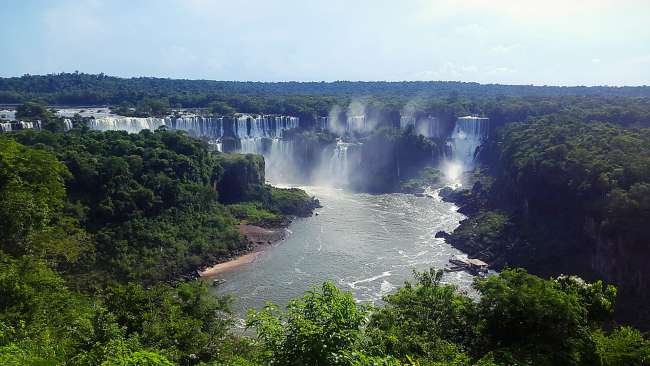
Awọn ijabọ irin-ajo Argentina
